Microcement for the floor
The floors ofmicrocementare much more than a coating that adds elegance and distinction. Betting on this material guarantees hardness, resistance to impacts and easy cleaning.
It is a continuous decorative coating that combines practicality and aesthetics in equal parts. Its ease of application results in a continuous surface without joints that creates a greater sense of spaciousness and a modern and avant-garde finish.
Its possibilities of application both in interior and exterior spaces allow to create floors that adapt to any support and decorative style. Microcement on floors allows to coat surfaces in a durable way and with a high level of customization.
What is microcement?
Microcement is a coating widely used in the construction world to create continuous and jointless surfaces, characterized by being very resistant and durable. It is composed of cement, resins, and pigments, and is applied in very thin layers over different types of surfaces, such as floors, walls, countertops, furniture, etc.
One of the most important characteristics of microcement is its ability to adhere to virtually any type of material, such as tiles, ceramics, cement, metal, wood, etc. This makes it an excellent option for renovating surfaces without the need to remove existing materials.
Microcement is known to be a very resistant material. As for its resistance to abrasion, it is important to mention that this material behaves in a very similar way to concrete, which means it has a great ability to resist wear and abrasion.
This property is very useful on surfaces such as floors, stairs or kitchen countertops, where constant exposure to daily use and friction can cause damage and premature wear. Due to its hardness, microcement is very resistant to scratches and erosion, making it an excellent choice for high traffic areas and constant use.
Regarding its resistance to compression, it is important to note that microcement is a very dense and solid material. Although its thickness is very thin compared to other coatings, its high density and mechanical resistance make it capable of supporting great weights without suffering deformations or cracks.
For this reason, it is a good choice for surfaces that must bear heavy loads, such as floors or countertops. In addition, its ability to adhere to virtually any surface makes it ideal for renovations, as it allows covering any previously existing surface, without the need to remove and replace it with a new one.
Microcement is available in a wide range of colors and textures, making it a very versatile material that can adapt to any decorative style. In addition, its finish is waterproof and non-slip, which makes it ideal for use in areas of high humidity, such as bathrooms and kitchens.
If you are looking for a resistant and long-lasting material, microcement may be an excellent choice for you.
Advantages of microcement on the floor
Microcement is a construction material that has become a very popular option for covering all kinds of surfaces. It is a continuous coating that is applied directly on the existing surface without the need to remove it, making it a quick, efficient and sustainable solution.
In addition, microcement is a resistant, durable and easy-to-maintain material, so it is an excellent option to apply on floors. In this article, we show you some of the benefits of microcement on floors and how you can make the most of this material.
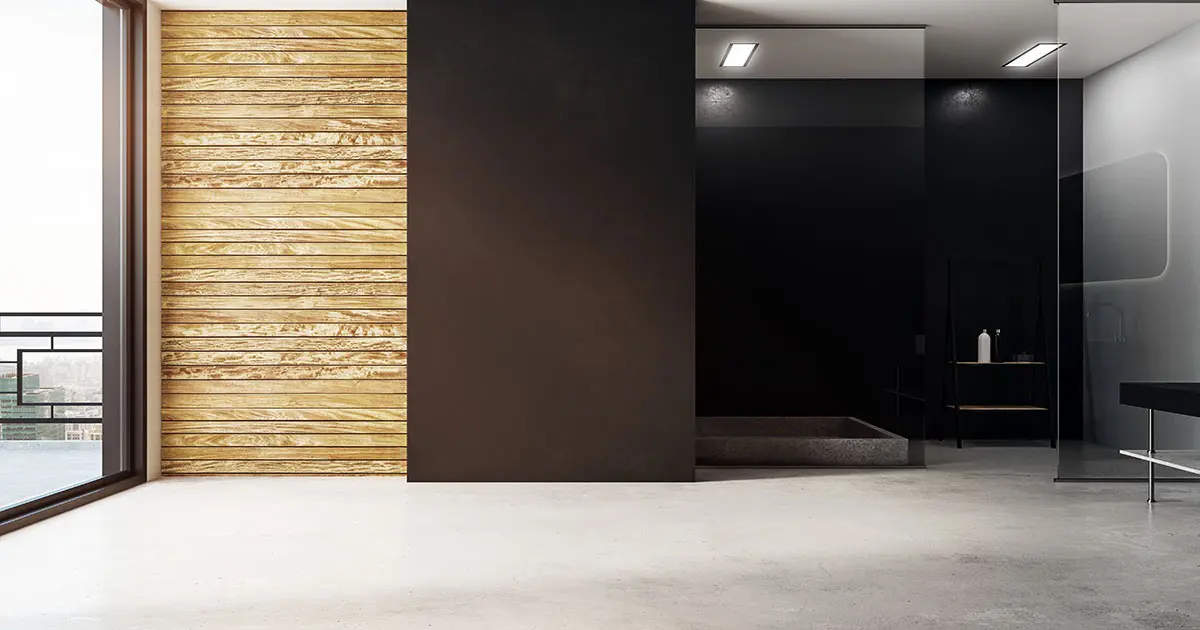
1. Microcement floors: joint-free surface for easy cleaning
One of the greatest benefits of microcement on floors is that it is a continuous coating, without joints, which makes cleaning easier by not accumulating dirt in joints and cracks. Microcement floors are very easy to maintain and clean with a simple damp cloth, which makes them a very practical option to apply in all types of spaces.
2. Microcement floors: surfaces with high resistance and durability
Microcement is a material composed of resin, cement and other additives that give it high resistance and durability. This material can withstand heavy stresses and does not crack or split with temperature changes, making it ideal for application on floors. Microcement floors are highly resistant to wear and abrasion, making them a perfect option for high-traffic spaces, such as shopping centers, hospitals or airports.
3. Microcement floors: their excellent adherence to any type of support as an advantage
Another major benefit of microcement in floors is its excellent adherence to any type of support, be it tiles, concrete, plaster or drywall. This means that it is not necessary to remove the existing flooring to apply the microcement, which reduces the time and costs of the work. Also, by applying directly on the existing substrate, microcement does not increase the thickness of the surface, making it a perfect option to renovate spaces without sacrificing ceiling or door height.
4. Microcement floors: enjoy its vast variety of finishes and colors
Microcement can be applied in a wide variety of finishes and colors, allowing the creation of customized and unique floors. From rustic and matte finishes to polished and shiny surfaces, microcement can be adapted to any style of decoration and ambiance. Also, microcement supports the inclusion of pigments to achieve different shades and combinations, allowing for extreme customization of the space.
5. Microcement floors: and the cherry on top, their application is quick and straightforward
The application of microcement on floors is a simple and quick process that does not require heavy machinery or construction work. The only requirement is to adequately prepare the support on which to apply the microcement to guarantee effective results.
In this way, no dust, dirt or debris is generated, making the application process, besides being fast, cleaner and more comfortable.
In a short time, a perfectly finished microcement floor can be achieved, providing a modern and minimalist touch to any environment. This reduces the time and costs of construction, making it an economical and practical option for any floor renovation.
Galería de microcemento en suelos
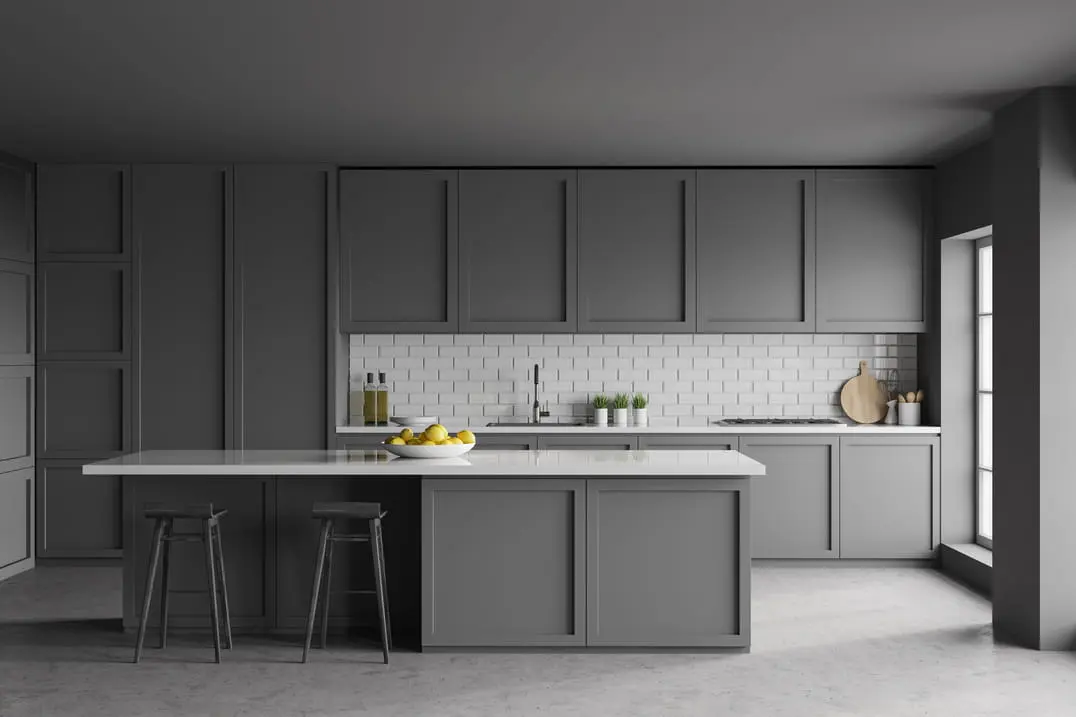
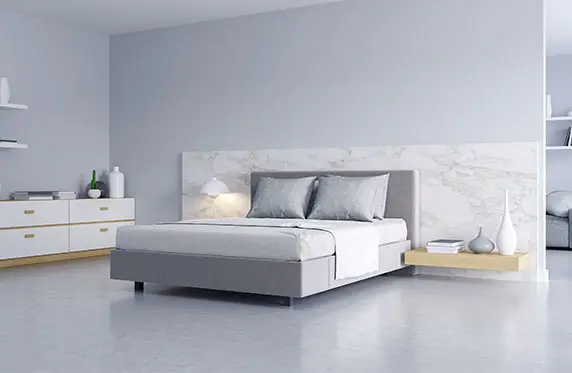
Finishes for microcement floors
Microcement has become a very popular material in decoration and construction of interiors and exteriors. This material is used to refurbish and upgrade surfaces with a modern and high-quality finish. One of the major appeals of microcement is its versatility, allowing it to create different textures and finishes. In addition, microcement can be applied to any surface, including walls, floors, ceilings, stairs, and furniture.
Next, we will focus on the different finishes, colors, and textures options microcement offers for floor applications. Starting with textures, it is important to highlight that microcement grain can be fine, medium, or coarse.
The fine grain texture is the smoothest and is mainly used on walls. The medium grain is more resilient and is the most commonly used for interior floors. The coarse grain, on the other hand, is the roughest and is used for exterior floors.
As for microcement finishes, various varnishing options exist. The sealant applied to the floor will determine the level of shine given to the microcement. There are high, medium, or low gloss finishes, and the choice of one or the other will depend on the environment that is desired to be achieved in the room.
The high gloss finish is very popular as it enhances the surface and enhances the color of the finish, creating a mirror effect. This finish is mainly used on indoor floors as it offers high resistance to abrasion and impacts.
On the other hand, matte finishes do not change the color of the pavement and subtly dull the coloration of the surface. This type of finish does not reflect light or does so minimally, giving it a softer and more discreet appearance. The matte finish is an ideal option for indoor floors seeking a more natural effect.
The satin finish is midway between the glossy and matte finish. This finish is ideal for those who want to darken or lighten the final tone of the coating. The satin finish is used on both indoor and outdoor floors.
Super matte finishes are an option for those seeking a simple appearance. This finish offers much less shine to the surface and is perfect for indoor and outdoor floors seeking a more natural effect.
As for the choice of color, it is worth mentioning that microcement can be pigmented in a wide variety of shades. The color chosen will depend on the atmosphere that is wanted to be achieved in the room and the decorative style that is being sought.
In this sense, it should be noted that lighter colors tend to give a sense of spaciousness and brightness, while darker colors create warmer and cozier environments.
It is important to note that, beyond textures and finishes, the application of microcement is a handcrafted process that allows achieving different effects depending on the technique used and the tools used. This allows the microcement applicator to customize each job and make it unique.
One of the most popular effects that can be achieved with microcement is the effect of veining or marbling. This effect is achieved by mixing different shades of microcement and applying them so that they resemble the veins of marble. The result is a surface with an elegant and sophisticated finish, ideal for modern environments.
Another highly demanded effect in the application of microcement is the rust effect. This is a finish that simulates the oxidation of iron, resulting in an aged appearance with a very interesting and original look. This effect works well in industrial or rustic environments.
In addition, aging or wear and tear effects can also be achieved, resulting in surfaces with an old or vintage appearance. This effect works well in rustic and traditional settings, and is a very interesting option for refurbishments of old houses.
Another technique often used in the application of microcement is the "stencil" technique. This involves using templates to create drawings and shapes in the microcement pavement. This technique allows to create customized and very original designs, like logos, names or even more complex drawings.
Microcement floor in terraces
Are you looking for a classy and durable solution to create fabulous terrace floors? Do you want the surface to be long-lasting and easy to maintain, while adding a touch of sophistication and style? Microcement is the answer you're looking for.
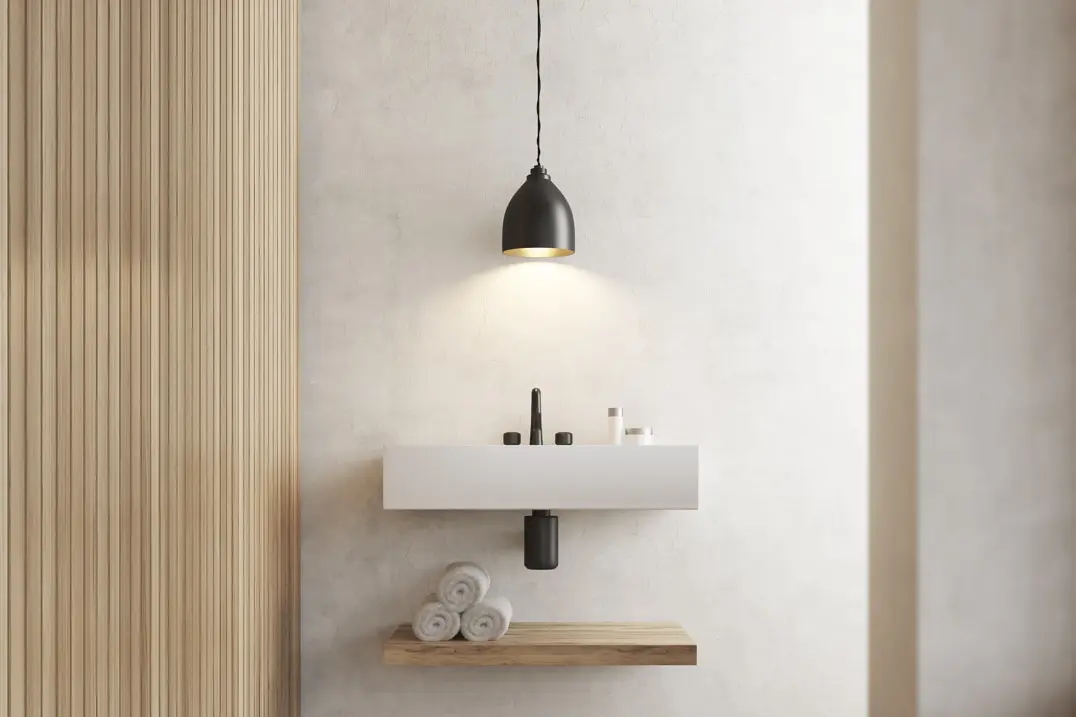
Microcement is a high-quality and highly versatile coating that can be applied on any surface, both indoors and outdoors. In the case of terraces, its application offers numerous advantages, starting with its great resistance to weather conditions and temperature changes, which makes it perfect for areas exposed to the sun, rain or wind.
Besides, microcement is a very easy material to clean and maintain, as it does not require any special treatment or chemical products to keep its original appearance. On top of that, the application of microcement is also a way to renew the aesthetics of a terrace without the need for major works or lifting the existing floor.
We must also take into account that, despite its resistance, microcement is not indestructible and can suffer scratches or damages if it is subjected to intense use or if objects that are too heavy or sharp are used on it. However, these problems are easily solvable with proper maintenance and responsible usage.
In summary, the application of microcement on a terrace floor can be a very interesting and recommended option if you are looking for a resistant surface, easy to maintain and with a touch of style and elegance. The expert hand of a qualified professional will undoubtedly assure the success of the application, allowing you to enjoy all its advantages for a long time.
Microcement floor in bathrooms
Microcement is an excellent alternative to renovate any type of surface, but it is especially suitable for the bathroom due to its resistance and durability. However, if you are thinking of installing microcement over existing tiles, there are some important considerations to keep in mind.
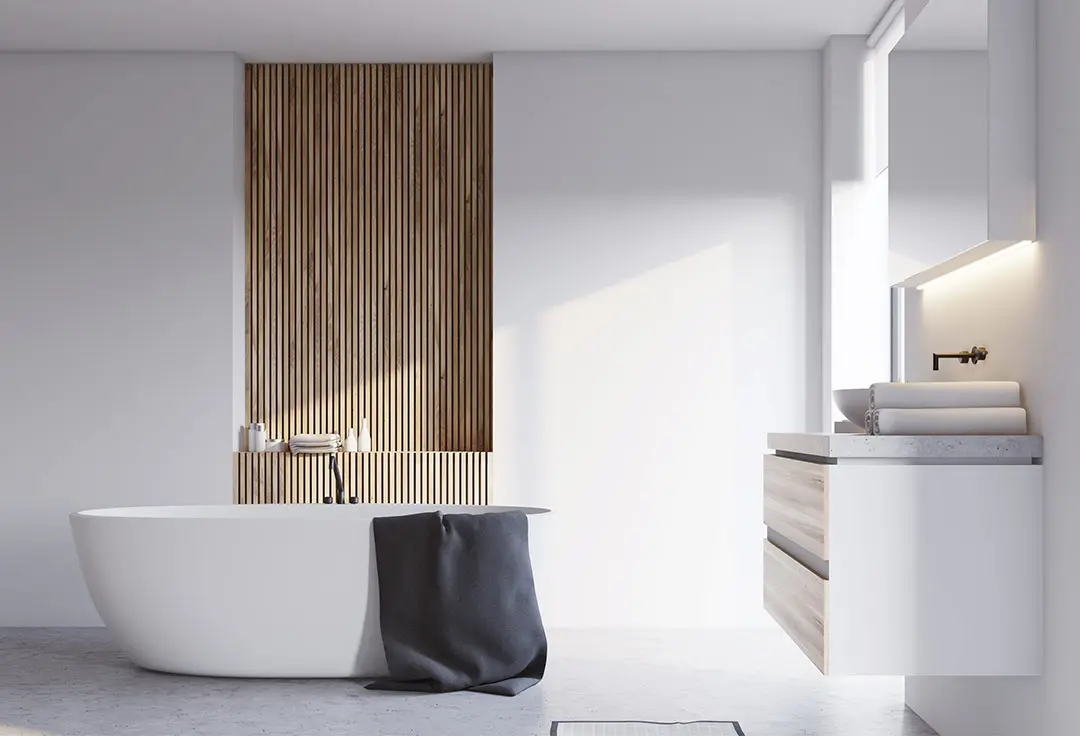
One of the main benefits of microcement on a bathroom floor is its resistance to water and moisture, making it an excellent option for this space. In addition, its smooth finish without joints facilitates cleaning and hygiene. Microcement is also resistant to wear and traffic, making it a durable option.
The first question that comes to mind when thinking of applying microcement over tiles is whether it is necessary to remove them. In general, it is not necessary to remove the tiles before installing the microcement, in which case, it is important to follow some steps to ensure a good result.
The first thing you should do is clean and degrease the existing tiles well to ensure that the microcement adheres correctly. Then, a primer layer should be applied to improve the adhesion of the microcement.
It is important to ensure that the surface is level before applying the microcement, which can be achieved by applying a self-leveling mortar. Finally, it is essential to choose a high-quality microcement to ensure an optimal result.
One of the main benefits of microcement on a bathroom floor is its resistance to water and moisture, making it an excellent option for this space. In addition, its smooth finish without joints facilitates cleaning and hygiene. Microcement is also resistant to wear and traffic, which makes it a durable option.
However, there are also some drawbacks to consider. Although microcement has many advantages in the bathroom, there are also some disadvantages that you should bear in mind.
Firstly, microcement is a material cold to the touch, which can be uncomfortable in the winter. In addition, microcement is a porous material, which means it is prone to staining and requires regular maintenance to keep its original look.
In addition, microcement can be slippery when wet, which can be dangerous in a bathroom. It is important to choose a microcement with a non-slip finish and use a sealer with the same properties to avoid slippage and potential accidents.
Microcement floors: even more options
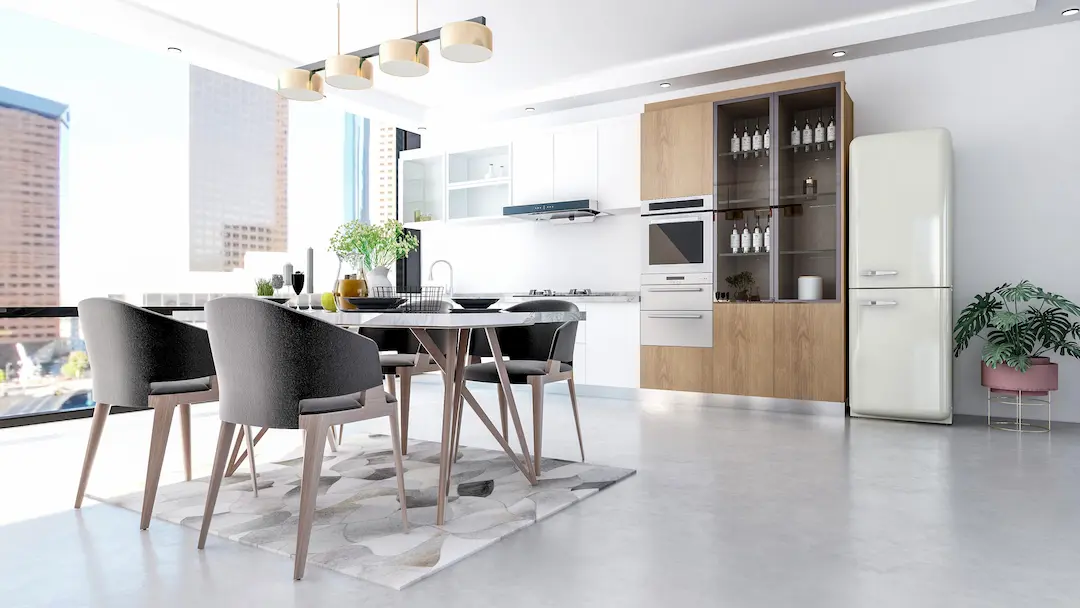
Microcement flooring in kitchens
The kitchen is one of the rooms in the house where microcement on the floor can be an excellent choice. Thanks to its resistance and durability, microcement withstands heavy foot traffic and the movement of furniture and appliances. Besides, its seamless finish prevents the build-up of dirt and grease, making cleaning easier. In terms of design, microcement allows for a wide variety of finishes, from rustic to modern, allowing it to fit any kitchen style.
Microcement flooring in living rooms
In living rooms, microcement can add a modern and sophisticated touch to the decor. Like in kitchens, microcement allows for a wide variety of finishes and the absence of joints makes cleaning much easier. Furthermore, microcement is a durable and resistant material that withstands traffic and furniture well.
Microcement flooring in hallways
In hallways, microcement flooring can be an excellent choice as it is an area with heavy foot traffic. Microcement allows for a seamless finish that prevents joints and makes cleaning easier. Furthermore, its resistance and durability make the floor withstand the passage of people and objects well.
Microcement flooring on stairs
Stairs are an area where safety is paramount, and microcement can be a good option thanks to its slip-resistant capabilities. In addition, its strength and durability allow it to withstand the wear and tear of people and do not require constant maintenance.
Microcement flooring in pool and recreation areas
Microcement is an ideal material for outdoor areas due to its resistance to water and temperature changes. Additionally, its slip-resistant finish makes it great for pool and recreation areas where safety is fundamental. Furthermore, its ease of cleaning makes it a highly practical material for these areas.
Microcement flooring in kitchens and industrial areas
Microcement is a material that has traditionally been used in industrial areas due to its resistance and durability. In these areas, microcement can withstand the traffic of vehicles and heavy machinery without damage, making it an excellent choice.
Microcement flooring in commercial areas
In commercial areas, microcement can be an excellent option due to its ability to withstand constant foot traffic. In addition, its seamless and joint-free finish facilitates cleaning and prevents the accumulation of dirt.
How to apply microcement to the floor: step-by-step guide
Microcement is a very versatile and durable material that can be used to cover floors in different spaces, from kitchens to industrial or commercial areas. Here we explain how to make a microcement floor step-by-step:
Necessary materials:
- Microcement
- Primer
- Epoxy resin
- Glass fiber mesh
- Sealants
- Rollers and brushes
- Trowel
- Sander
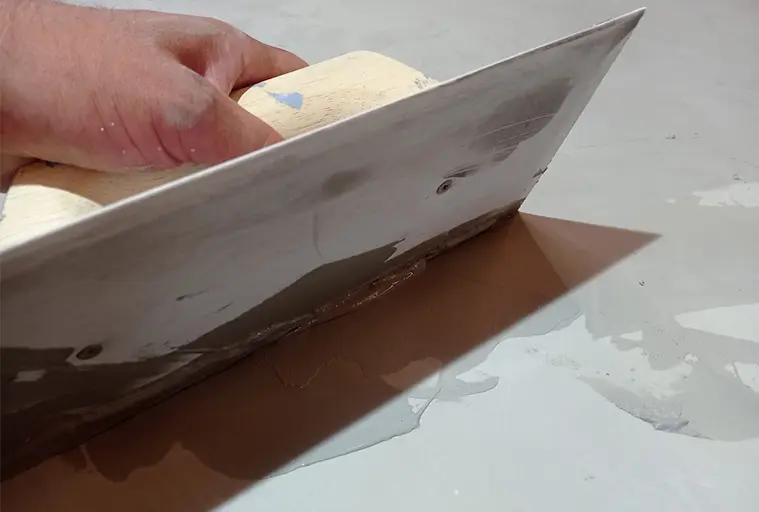
Step 1: Cleaning the existing floor
Before starting to apply the microcement, it is necessary for the floor to be completely clean and dry. All traces of dust, stains, grease, or any other particle that may affect the adherence of the microcement to the substrate must be removed. It is also important to ensure that the base is in good condition and that there is no rising dampness. If the floor is damp, a layer of epoxy resin should be applied to serve as a vapor barrier.
Step 2: Application of the primer
Once the floor is clean and dry, a layer of primer should be applied to enhance the adhesion between the existing surface and the new microcement floor. Depending on the type of surface, one or another primer should be used. Whether the surface is absorbent, such as concrete, or non-absorbent, such as terrazzo or marble, a specific primer product will be used.
Step 3: Placement of the first layer of base microcement
After applying the primer, the first layer of unpigmented base microcement is placed. It is advisable to use a fiberglass mesh to minimize the appearance of cracks over time. Once applied, the surface should be sanded.
Step 4: Placement of the second layer of pigmented base microcement
Once the first layer is completely dry, a second layer of pigmented base microcement is placed. At this step, the desired microcement color to cover the continuous floor will be chosen and, once the surface is perfectly covered, the microcement floor should be sanded.
Step 5: Placement of two layers of finishing microcement
The fifth step consists of applying two layers of finishing or ending microcement with pigment. Depending on the finish and the desired degree of slipperiness, medium or thick microcement can be used.
Step 6: Protection of the microcement floor
The final step of the application of microcement on the floor is one of the most important. The flooring is ready, now it needs to be protected. For this, two layers of sealant will be applied. In addition to protecting the microcement of the floor, it can be waterproofed and even achieve a non-slip finish.
Care for microcement floors
It is important to clean, protect and properly maintain a microcement floor because, although it is a resistant and durable material, it can also suffer damage if not properly cared for. Microcement is an investment that improves the appearance and functionality of a home's floor, and its proper maintenance ensures that the surface remains in perfect condition for years.
Moreover, if properly cared for, microcement will not only maintain its sleek and modern appearance, but it can also prolong its lifespan, saving costs and efforts in the long run. In short, taking care of a microcement floor is a smart way to protect the investment that was made and to ensure that the surface always looks impeccable.
How to clean a microcement floor
Microcement has become one of the star coatings in the world of decoration and construction thanks to its versatility and unique aesthetics. This material has become a benchmark for architects and interior designers worldwide due to its great ability to adapt to any environment and provide a touch of modernity and sophistication. Moreover, microcement is a material that is easy to maintain and clean, making it an ideal option for those who are looking for a practical and resistant floor. In this article, we will tell you everything you need to know to keep your microcement floor in perfect condition.
The cleaning of the microcement floor is very simple, and is similar to that of other indoor floors. To keep it in good condition, all you need is a damp cloth and neutral pH soap. This type of soap is the most suitable for the maintenance of microcement floors, as it does not contain harsh chemicals that can damage the surface.
To clean the floor, it is recommended to apply a small amount of diluted soap in warm water and rub the surface with a damp cloth. It is important not to use abrasive products, as they can scratch the surface and damage the finish of the microcement. Also, it is important to remove spilled liquids immediately to prevent them from getting embedded in the surface.
How to protect a microcement floor
Protecting the microcement floor is essential to guarantee its durability and original appearance. One of the most effective ways to protect it is to apply a layer of special wax diluted in water. This wax layer not only protects the floor, but also gives it a gloss and livelier appearance. It is recommended to apply the maintenance wax periodically to keep the microcement floor in perfect condition.
Another important recommendation to protect the microcement floor is to avoid dragging furniture and chairs without rubber protections, as this can scratch the surface and damage the microcement finish. It is recommended to use rubber protectors or lift the furniture to avoid any kind of damage.
How to maintain a microcement floor
Maintenance of the microcement floor is essential to maintain its original appearance and extend its useful life. In addition to cleaning and properly protecting it, it is important to take into account some additional tips to keep it in perfect condition.
In outdoor spaces, it is recommended to apply a sealant periodically according to the use of the surface. This sealant protects the microcement floor from external agents and keeps it in perfect condition for a longer time.
Also, it is important to avoid leaving stagnant water on the floor, especially on outdoor surfaces. Stagnant water can cause stains and damage to the surface, so it is recommended to remove it immediately.
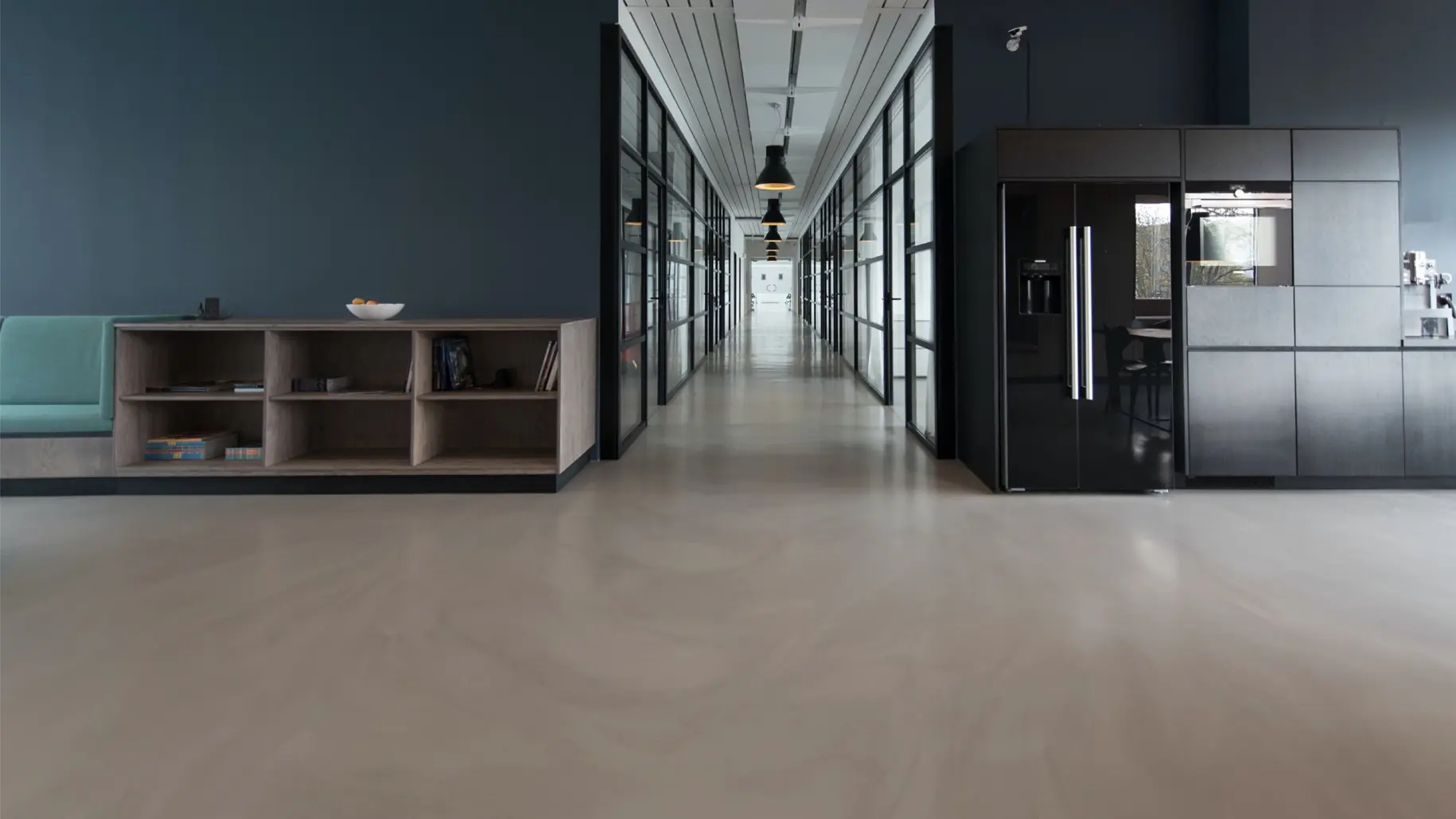
Materials that combine with microcement floors
The versatility of microcement as a decorative covering makes it a perfect material to combine with a wide range of materials. It is the product designed to cover surfaces and create 100% personalized design environments. Which materials are its best allies?
Microcement and metal
The combination of microcement and metal has become one of the most popular trends in the world of interior decoration. At first glance, these two materials may seem opposite, as one conveys a sense of coldness while the other is often associated with warmth and naturalness. However, combining them appropriately can lead to rooms of great harmony and elegance.
Microcement is a versatile and resistant material that adapts to any type of surface, from walls to floors and furniture. Its smooth and uniform finish perfectly complements the texture and shine of metal, creating a modern and sophisticated aesthetic. In addition, microcement can be applied in a wide variety of shades, allowing even more customization and adaptation to each person's taste.
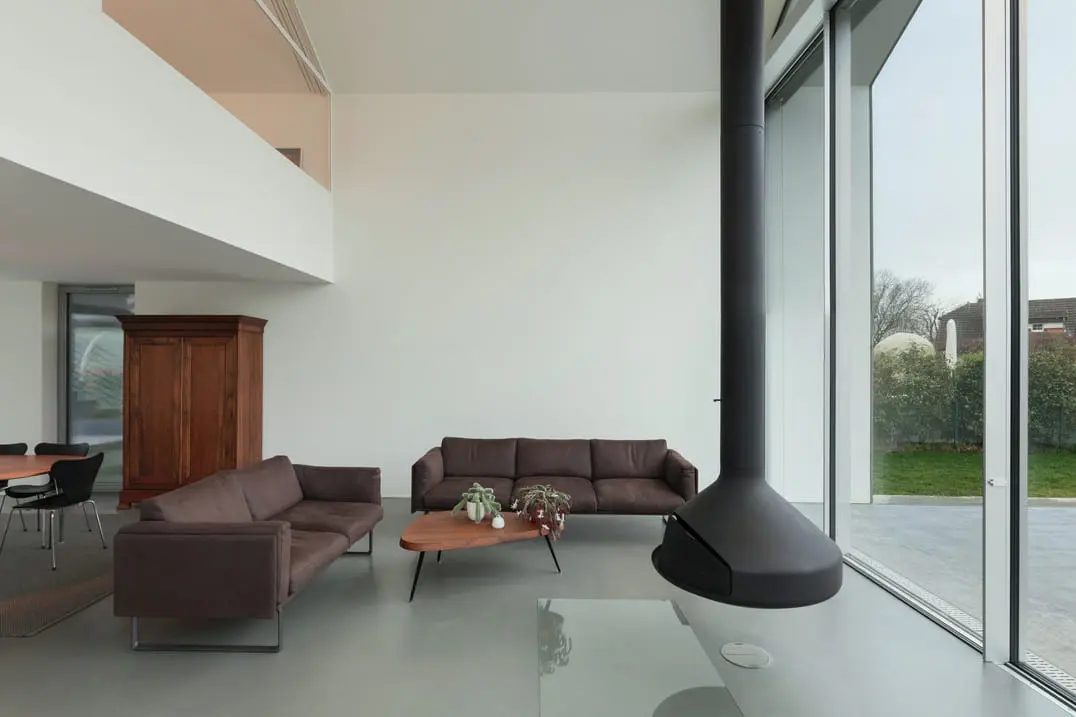
When combining microcement and metal, it is important to consider some key aspects. For example, it is recommended to use metal in specific elements, such as beams, lamps, or handles, to create a contrast effect with the microcement and thus highlight its presence. It is also important to appropriately choose the type of metal, considering its durability and its ability to integrate into the overall room decor.
In conclusion, the combination of microcement and metal is a sure bet for those seeking to create spaces with personality and style. If the materials are chosen correctly and skillfully combined, the result will be an elegant, modern, and sophisticated room that conveys a sense of harmony and balance.
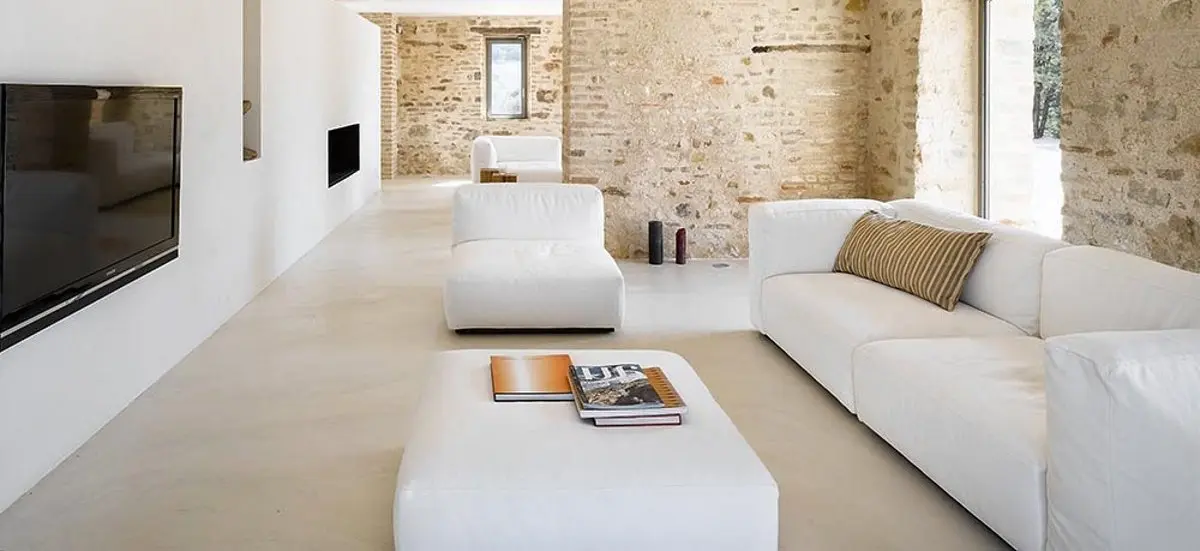
Microcement and natural stone
The combination of microcement with natural stone is another of the most popular options in the world of interior decoration. Although they are two opposite materials in terms of texture and appearance, their combination can result in spaces of great beauty and resistance.
Natural stone is a timeless material that has been used for centuries in construction and decoration. Its rough texture and natural appearance give it a rustic and cozy charm, which can be enhanced with the application of microcement.
This material brings uniformity and resistance to the set, avoiding the wear and maintenance problems that often arise with natural stone.
The combination of microcement and natural stone is ideal for those seeking a decorative style that integrates different influences and styles. It's a good way to give a rustic touch to a modern room, or to bring a touch of modernity to a more classic space. Moreover, the resistance of microcement and the durability of natural stone ensures that the result will be a floor or wall of high quality and beauty that will last over time.
When combining microcement and natural stone, it is important to choose the type of stone and the shade of the microcement appropriately in order to create a harmonious and balanced set.
Microcement with wood
Wood is a natural material that conveys warmth, while microcement is modern and minimalist. Even though they may seem like opposing materials, their combination is perfect for creating unique and cozy spaces. The relationship between both materials is that of two elements that coexist in harmony, without one overshadowing the other.
Microcement is generally used on walls and floors, while wood is more common in furniture and decorative elements. By combining them, aesthetic continuity can be achieved, causing different elements to merge together into a single piece. This is achieved by choosing tones that harmonize with each other, so the mix doesn't turn out to be shrill.
In addition, the contrast between wood and microcement creates an interesting visual tension, making spaces appear more dynamic and attractive.
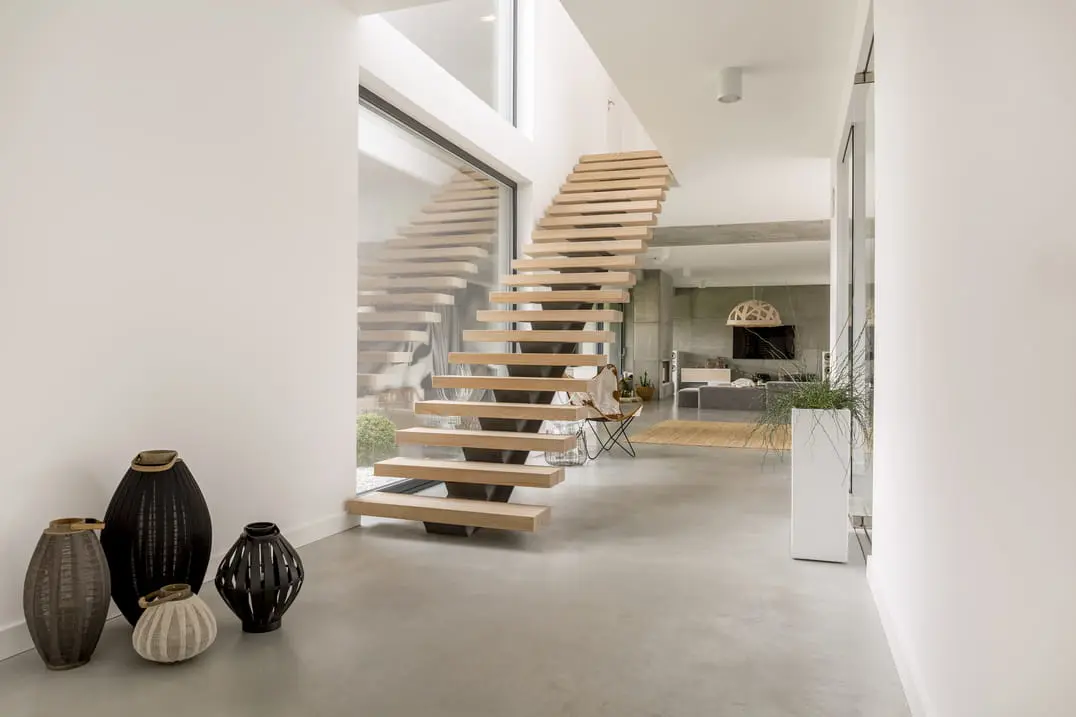
The effect of wood with its texture and grain, along with the sobriety and uniformity of microcement, creates a sense of balance and tranquility.
The combination of these two materials is especially recommended for large, open spaces, like lofts or studios, as the contrast of textures and shades adds dynamism and depth. Furthermore, their combination can also be a good option for creating warmer and more comfortable environments in any type of home.
In conclusion, the combination of microcement and wood is an excellent option for those seeking modern, elegant and warm decor at the same time. It's a unique mix that combines the best of both materials to create unique, cozy and sophisticated spaces.
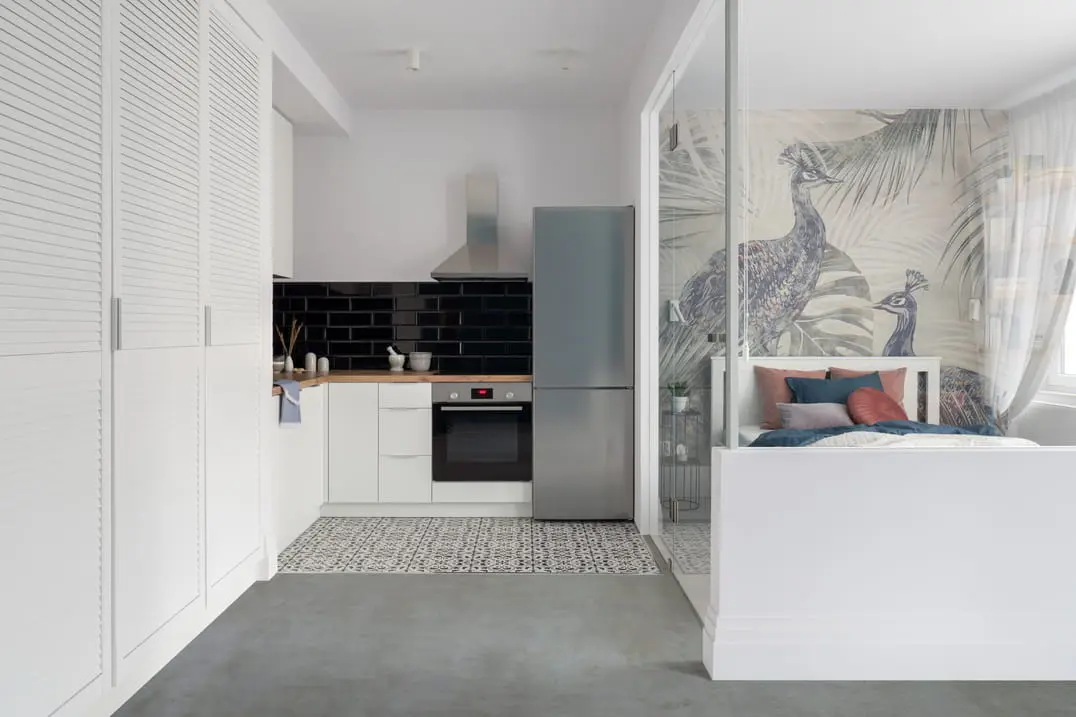
Microcement with hydraulic tiles
The combination of microcement and hydraulic tiles is especially recommended for those seeking a modern and sophisticated style with a vintage touch. Hydraulic tiles are unique decorative pieces that have been used since the early 20th century and are characterized by their geometric designs and vibrant colors. This handmade technique continues to be very popular today and is used to create a nostalgic and timeless atmosphere in any home.
The application of microcement with hydraulic tiles creates a smooth and uniform surface that perfectly complements the classic style of the tiles. The lack of joints between the hydraulic tiles and the microcement makes the space look larger and cleaner. Furthermore, microcement adds resistance and durability to the flooring, making it a very practical option for high-traffic areas.
The combination of these two materials provides a perfect balance between modern and traditional, and allows for the creation of unique and personalized spaces. The choice of colors and patterns of the hydraulic tiles and the microcement is key to creating a harmonious aesthetic. The combination possibilities are endless, from monochromatic designs to more elaborate patterns with a wide variety of colors.
On the other hand, the resistance of the microcement and its easy maintenance make it an ideal option to combine with hydraulic tiles in any room of the house, even in places like the kitchen or bathroom. Microcement is a waterproof and slip-resistant material that perfectly adapts to the needs of these spaces.
In conclusion, the combination of microcement and hydraulic tiles creates a unique and personalized aesthetic that perfectly blends the modern with the traditional. Plus, the resistance and ease of maintenance of microcement make it a practical and durable option for any home. If you're looking to create a nostalgic and sophisticated atmosphere, the combination of microcement and hydraulic tiles is a safe and elegant choice.
Microcement colors for floors: will you be able to choose just one?
It's clear that microcement is one of the most versatile materials in terms of interior decoration. Currently, its application on floors has become very popular due to its resistance, durability, and modern aesthetics. In addition, one of its great attractions is the variety of colors in which it can be found.
Each color of microcement can transmit different sensations and generate different atmospheres in spaces. For this reason, it is important to know what color options are available and their characteristics, to choose the one that best suits our needs and tastes.
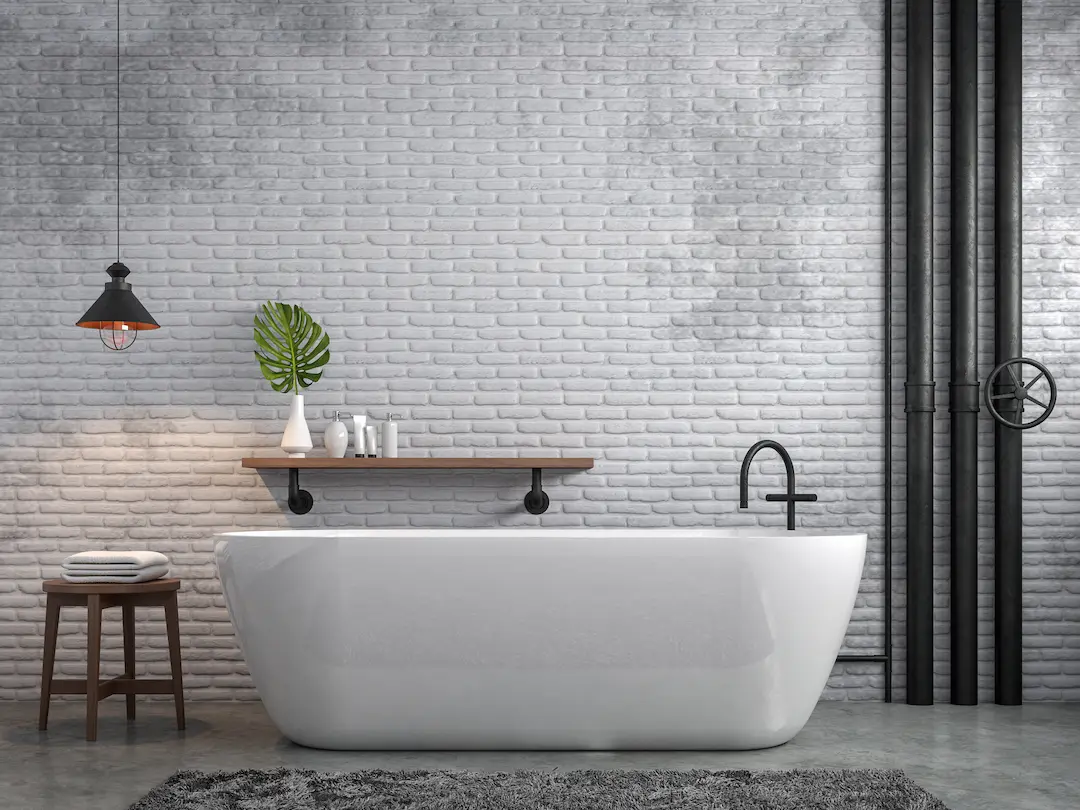
Warm and natural microcement floor: the sand tone
The sand tone is one of the most requested shades in microcement for its application on floors. Its warm light beige tone provides naturalness and freshness to any space. This color adapts perfectly to rustic, modern or minimalist environments, as its neutral tone easily combines with other colors and decorative elements. In addition, its sandy and textured appearance gives a touch of originality to the surface.
Elegant and sophisticated microcement floor: the black
Although it may seem daring, black is a very elegant and sophisticated option to apply on microcement floors. This color gives a sense of depth and mystery to the space, as well as a sense of spaciousness.
We recommend its use in modern and minimalist environments, where the aim is to create contrasts with other decorative elements. To avoid an excessive feeling of darkness, it can be complemented with light tones on walls and furniture.
Bright and relaxing microcement floor: the white
White is a timeless and classic option for the application of microcement on floors. This color is perfect for those seeking a sense of spaciousness, brightness and clarity.
In addition, white adapts perfectly to any decorative style, from the most minimalist to the most classic. It is a recommendable option for small rooms or with little natural light, as it reflects light and generates a sense of spaciousness. It is also an ideal option for bathrooms and kitchens.
Microcement floor serene and balanced: the grey
Grey is a color that conveys a sense of serenity and balance, making it an excellent option to apply on microcement floors. In addition, its neutral tone perfectly matches other colors and decorative elements, so it adapts to any decorative style.
In its lightest tones, gray translates into a youthful environment full of brightness, while in its darker shades, it brings elegance and serenity to the space.
Refreshing and vital microcement floor: blue
Another color that stands out on the microcement floor is blue, especially in softer tones and floors with matte finishes. It is a perfect option to create a serene and fresh atmosphere, and it brings a sense of tranquility and harmony.
Furthermore, it is a very versatile color that combines with different decorative styles. For example, on microcement floors in light blue tones, you can create spaces with a very cozy nautical style.
Elegant and timeless microcement floor: the cement tone
The cement tone is one of the most popular shades in the application of microcement on floors. Its neutral and timeless tonality brings elegance and serenity to the space, and it matches perfectly with other decorative elements.
Additionally, its textured appearance gives a touch of originality and personality to the microcement floor. Being a neutral tone, cement is easily combined with other colors and decorative elements, making it a versatile option for any type of environment.
Its textured appearance brings a sense of depth and relief to the floor, making it a popular choice among those looking for a touch of originality in their decoration.
In summary, the cement tone is an elegant and versatile option that adapts to any decorating style and offers a finish with unique personality on the microcement floor.
Rustic and cozy microcement floor: the terracotta tone
Another interesting option for the application of microcement on floors is the terracotta tone. This color, inspired by clay, brings a sense of warmth and comfort to the space.
In addition, its reddish-orange hue brings energy and vitality to the environment, making it a good option for areas like the kitchen or dining room. The terracotta tone is also a good choice for those looking to create a rustic and cozy atmosphere in their home.
Refined and modern microcement floor: the graphite tone
If a darker option is what you are looking for, the graphite tone is an interesting choice. This color, similar to black but with a softer touch, adds elegance and sophistication to the microcement floor.
In addition, its dark hue is perfect for those who are seeking a more intimate and cozy ambiance, as it creates a feeling of depth in the space. The graphite tone is an ideal option to combine with decorative elements in light tones, which allows for creating contrasts and playing with textures in the decoration.
Solemn and discreet microcement floor: the stone tone
Lastly, we cannot fail to mention the stone tone, an ideal choice for those looking for a natural and timeless option for their microcement floor. This color, inspired by natural stone, brings a sense of tranquility and calm to the space.
Moreover, its greyish hue perfectly matches with other decorative elements in natural tones, such as wood, which allows to create a cozy and relaxing environment at home.
In conclusion, microcement offers a wide variety of color options for floor application, each with their own characteristics and decorative possibilities.
From the bright and relaxing white tone to the natural and timeless stone tone, through options such as cement, terracotta or graphite, each hue offers a finish with a unique personality and endless decorative possibilities.
The shades chosen for the microcement floor will depend on the style you want to achieve and the characteristics of the room. For small and poorly lit spaces, we recommend using light tones to create a sense of spaciousness and brightness, whereas in large and bright spaces darker shades can be used to create a cozier and more sophisticated environment.
The choice of color is fundamental to achieve the desired atmosphere, and a microcement floor can be an excellent choice to achieve it.